MAS:Consumer Price Developments in November 2023
Summary
• MAS Core Inflation edged down to 3.2% on a year-on-year (y-o-y) basis in November, from 3.3% in October. o This was driven by lower inflation for retail & other goods, food, as well as electricity & gas.
• CPI-All Items inflation fell to 3.6% y-o-y in November, from 4.7% in October. o This was largely due to lower private transport inflation.
• On a month-on-month (m-o-m) basis, core CPI inched up by 0.1% in November, as the prices of food and services rose. By contrast, CPI-All Items dipped by 0.2% due to a fall in private transport costs.
Chart 1: MAS Core and CPI-All Items Inflation
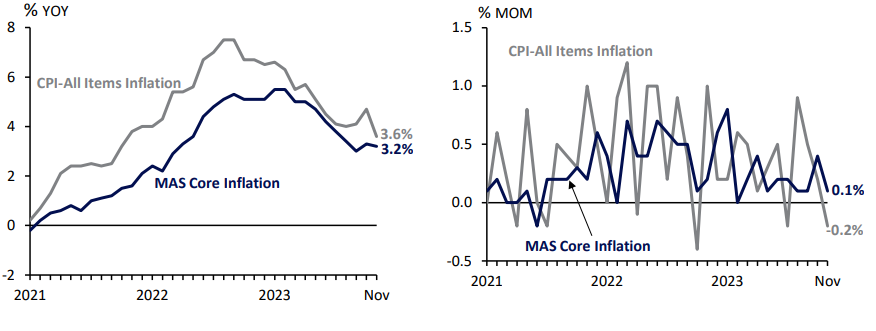
Chart 2: % Point Contribution to Year-on-year CPI-All Items Inflation
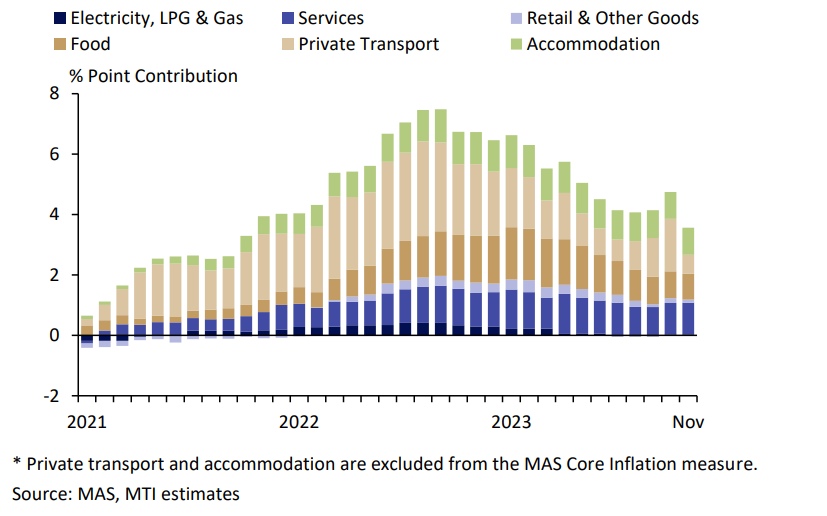
CPI-All Items inflation fell to 3.6% y-o-y in November.
CPI-All Items
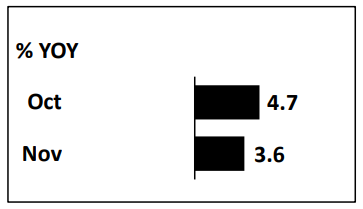 CPI-All Items inflation eased, mainly on the back
of lower private transport inflation.
CPI-All Items inflation eased, mainly on the back
of lower private transport inflation.
Private Transport
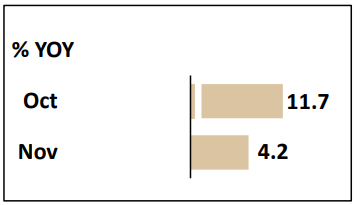
Private transport inflation declined as car prices rose at a much slower pace.
Retail & Other Goods
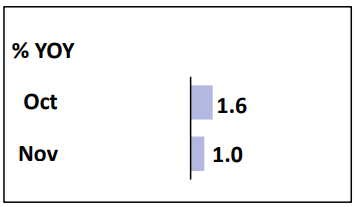
Retail & other goods inflation fell, largely on account of a decline in the prices of medical goods and household durables, as well as a smaller increase in the prices of personal care products.
Food
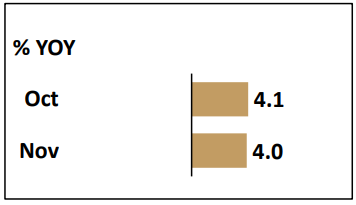
Food inflation edged down as the prices of prepared meals rose at a slower rate.
Electricity & Gas

Electricity & gas inflation eased, due to a smaller increase in electricity costs.
Accommodation
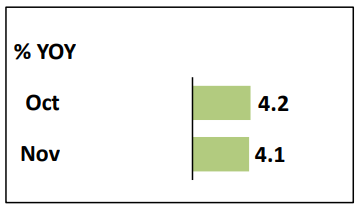
Accommodation inflation moderated as the pace of increase in housing rents slowed slightly.
Services
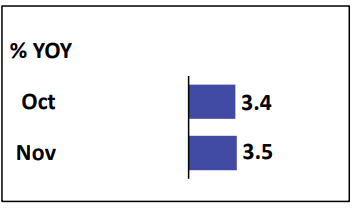
Services inflation edged up, as the costs of outpatient services, recreational & cultural services and telecommunication services rose at a faster pace. At the same time, airfares posted a smaller decline.
Outlook
Global crude oil prices have been volatile in recent months, falling in November after having risen earlier. Meanwhile, global prices for most food commodities, as well as intermediate and final manufactured goods, have continued to fall. These factors, alongside the stronger S$ trade-weighted exchange rate, should continue to temper Singapore’s import cost pressures in the quarters ahead.
On the domestic front, unit labour costs are expected to rise at a slower pace in tandem with the gradually cooling labour market. Businesses are likely to continue passing through higher labour costs to consumer prices, albeit at a more gradual pace.
MAS Core Inflation is projected to remain around current levels and come in at the upper end of the 2.5–3.0% range at year end. In early 2024, core inflation is expected to be impacted by the increase in the GST rate as well as seasonal effects. However, core inflation should resume a broadly moderating trend over the course of 2024, as import cost pressures decline and tightness in the domestic labour market continues to ease.
CPI-All Items inflation could remain volatile in the near term amid recent swings in COE premiums. Over the course of next year, CPI-All Items inflation is expected to decline as private transport inflation slows in tandem with an expected increase in COE quotas. Accommodation inflation is also projected to ease as the supply of completed housing units increases.
For 2023 as a whole, CPI-All Items inflation is expected to average around 5%, and MAS Core Inflation around 4%. In 2024, headline and core inflation are projected to average 3.0–4.0% and 2.5–3.5%, respectively. Excluding the transitory effects of the 1%-point increase in the GST rate to 9%, headline and core inflation are expected to come in at 2.5–3.5% and 1.5–2.5%, respectively.
Upside risks remain, including from fresh shocks to global energy and food commodity prices
due to geopolitical conflicts and adverse weather events, and more persistent-than-expected
tightness in the domestic labour market. At the same time, there are also downside risks such
as a sharper-than-projected slowdown in the global economy, which could induce a greater
easing of cost and price pressures.
























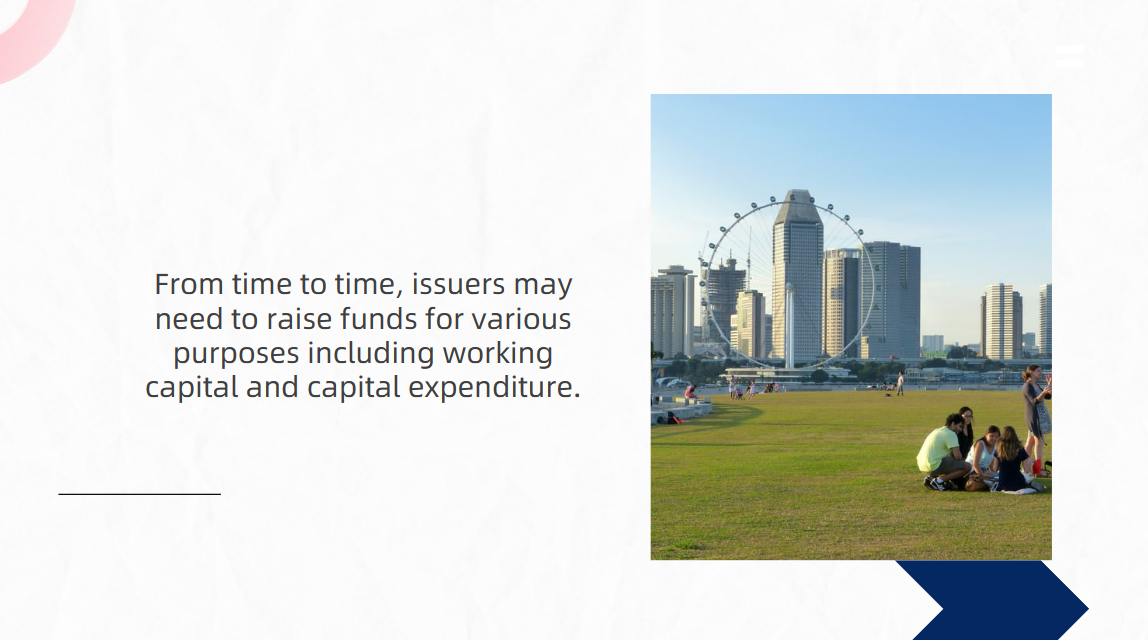
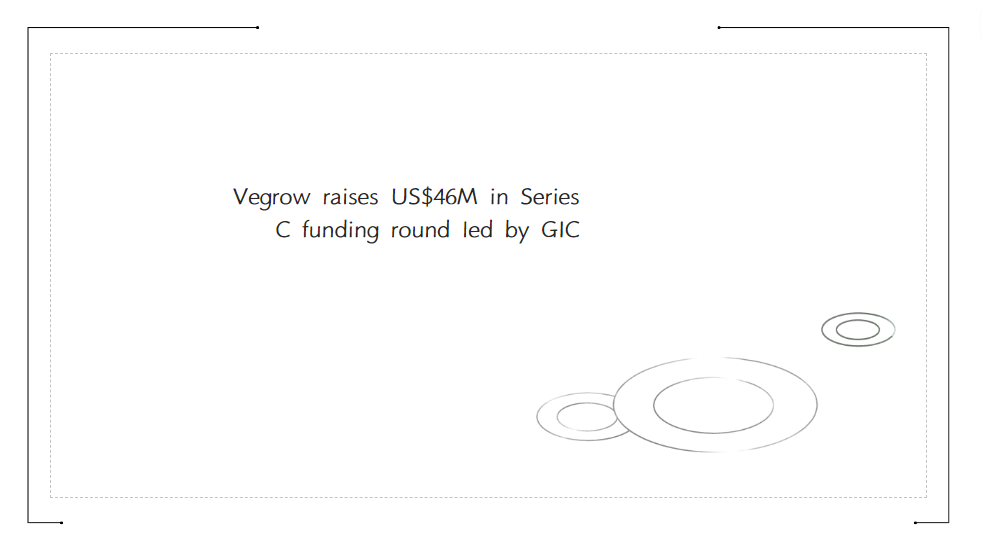
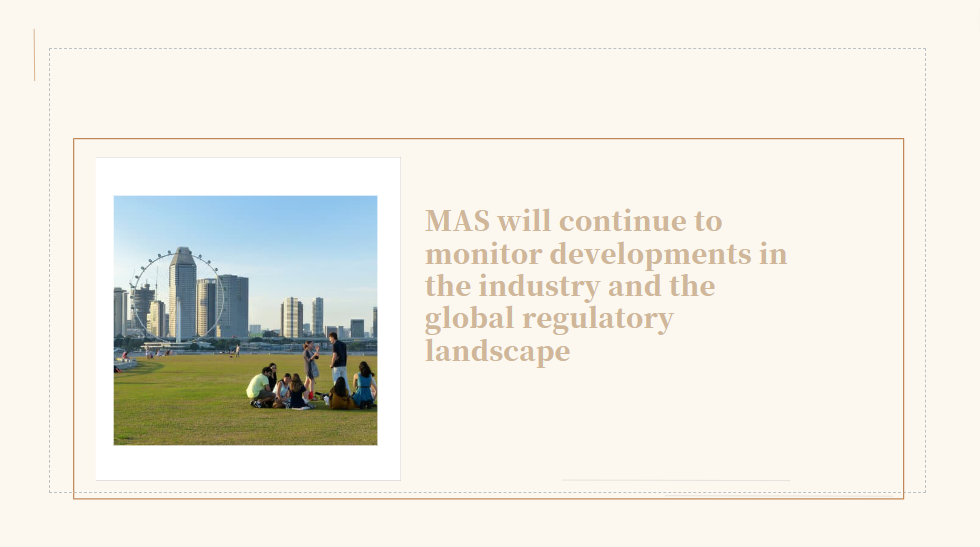




























First, please LoginComment After ~